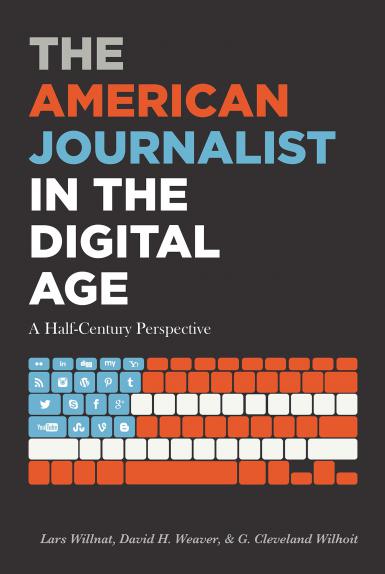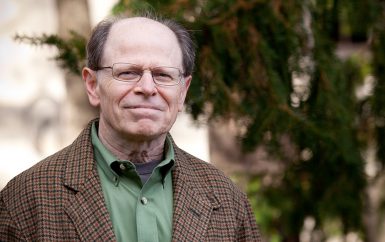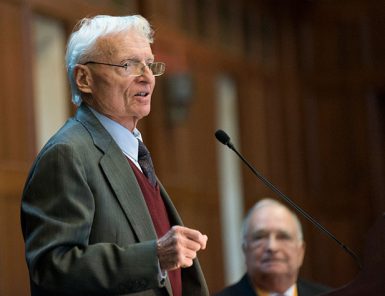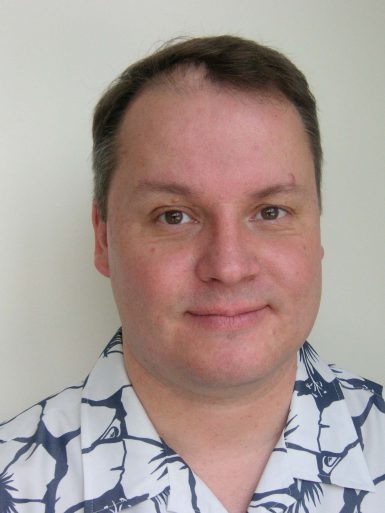New volume to 46-year journalism study inspects digital age
 The early 1970s proved to be a significant era for journalism.
The early 1970s proved to be a significant era for journalism.
In June 1971, The New York Times released the Pentagon Papers, only to be condemned and tried by the Nixon administration in the Supreme Court. About a year later, members of the same administration were caught in a break-in at the Watergate office complex in Washington, D.C., leading to some of the most revered investigative reporting in the history of the free press.
Transitions were inescapable. In the fall of 1971, a study from the University of Illinois at Chicago highlighted the tensions between journalists in the newsroom, in an era already prominent in government-press tensions. The study illustrated the conflict between unwavering, totally objective journalism and “participant-whole truth” reporting, the latter adopted by the younger generation of journalists to monitor and expose government corruption.
This study provided the foundation for “The American Journalist,” a study conducted by IU emeritus professors and current scholars David H. Weaver and G. Cleveland Wilhoit, which was published in 1986 and later followed up with a second edition and three subsequent studies published every decade. These sequels were not initially planned by either Weaver or Wilhoit, but came as responses to growth of the media industry.

“Each decade, exciting, new things came along, and it just seemed incumbent to do it again,” Wilhoit said.
The latest study, “The American Journalist in the Digital Age: A Half-Century Perspective,” was published today. Former IU journalism professor and current Syracuse University professor Lars Willnat, MA’91, PhD’92, who previously worked with Weaver and Wilhoit on the 1992 American Journalist study as a student, is a leading author on this book as well. He claims partial responsibility for the continuation of the series after the 1992 study.
“I was a student, I worked on it, I enjoyed it and I think it’s an important book,” he said. “So I kind of twisted (Weaver’s) arm, and we did it one more time.”
Based on more than 1,000 online interviews with United States journalists, conducted in fall 2013, the new book focuses on the influence of social media in the newsroom. This is a topic that has generated much controversy among members of the press. Some welcome a more online-based focus for publications, while others are concerned about the future of print and the jobs that a lack thereof may threaten.

These changes are happening to various outlets and affecting them in different ways. The New York Times is in the process of eliminating its standalone copy editing desk. This semester, the Indiana Daily Student transitioned from printing five days a week to only two days, while simultaneously expanding its digital coverage. These changes for publications across all media come as a response to an offset of circulation, as well as a decrease in print advertising revenue.
Compared to the 2002 American Journalist study, journalists today are less satisfied with the demands of their work, more aware of the workplace shrinkage and overall more likely to say the industry is heading in the wrong direction.
Willnat, who was the lead author on the social media chapter in the new book, said there is about a 75/25 percent split between journalists who do and do not use social media, with skeptics of the practice typically in the minority.
“It tends to be older journalists who are somewhat afraid of losing out because they don’t know how to use it, and they have to be educated in it,” Willnat said. “They haven’t grown up with it. To them, it’s a bit of a challenge to catch up.”

Another issue that has come from the digital age and social media is the rise in widespread criticism of the media. President Donald Trump has used his Twitter presence to continually and openly criticize various media platforms. Wilhoit said Trump’s anti-press critiques have extended in more charismatic and creative ways than former president Richard Nixon or former Vice President Spiro Agnew ever achieved.
“Trump has turned it into an art form,” Wilhoit said. “Nixon and Agnew were bumbling compared to him.”
Wilhoit said he also believes Trump is more “in tune” with the press than the aforementioned leaders. He believes the president’s “greatest interest” is to watch and read every morning about how his often-controversial tweets have been handled by various news sources.
However, Willnat said he thinks this has allowed for the chance for a new “golden era of journalism” to take place, citing the recent influx of New York Times subscriptions since the 2016 election. He believes media credibility has risen as people realize that the press provides information they may need.
“I think people are slowly waking up to that,” Willnat said.
More positive findings from the study, when compared to the 2002 study, show journalists are more likely to be women and to identify as politically independent, as opposed to leaning toward the Democratic or Republican parties. Journalists interviewed for the study were also less likely to justify certain reporting practices – such as bribery, working undercover or harassing sources – for a particular story. The authors argue in the executive summary of their book that these are “indicators of a more cautious and perhaps more ethical journalism.”
Willnat said he hopes to continue this series and begin a new study, which so far is scheduled to begin in 2022, and plans to ask Weaver and Wilhoit to accompany him with it.
“And we probably won’t be able to say no,” Wilhoit said.

